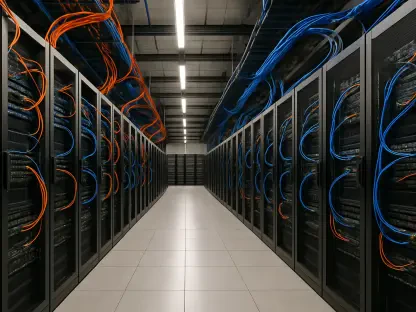In an age where electricity fuels nearly every aspect of modern life, the efficiency and reliability of power grids have become more crucial than ever. With increasing demands and complex challenges, innovative solutions like simulation technology are at the forefront of power systems transformation. This technological advancement offers promising potential to revolutionize grid management and maintenance, ensuring seamless power generation and distribution. The journey into simulation technology reveals not only its core principles but also its significant impact on the energy sector.
Unveiling the Role of Simulation Technology
Simulation technology serves a pivotal role in enhancing the design and operational integrity of power systems. It hinges on modeling activities essential for predicting how electrical systems will perform under various conditions. Engineers delve into electromagnetic field analysis to grasp the intricacies of electrical behavior and ensure the systems’ stability and efficiency. The technology’s context emerges from the growing sophistication of power grids that require intricate analysis to prevent failures and optimize performance.
Reflecting its prominence across the technological landscape, simulation technology is integral to the power sector’s transition into more intelligently managed and sustainable systems. By simulating real-world scenarios, this technology has driven profound improvements in how power is generated, distributed, and consumed. Its evolution signifies a critical advancement, as engineers aim to maintain power system reliability and adapt to urbanization and green energy trends.
Exploring Core Features and Components
Electromagnetic Field Analysis
Central to simulation technology is electromagnetic field analysis, a vital feature allowing engineers to scrutinize electrical properties, including currents and voltage behaviors. This analysis empowers engineers to anticipate and rectify issues before they manifest in real-world applications, such as transformer vibration and performance optimization. Electromagnetic field analysis is indispensable for ensuring that the high-voltage systems within the grid maintain their intended performance levels without disruptions.
Structural and Acoustics Simulation
Another key component, structural and acoustics simulation, provides an insightful look into the mechanical and acoustic behaviors of power systems. This simulation helps address challenges like transformer noise—a significant concern in densely populated areas. For instance, using multiphysics simulation software, designers can predict acoustic emissions and adjust designs to minimize noise, thereby reducing the need for costly adjustments after installation. Structural simulations also play a role in assessing grid robustness and resilience against external stresses.
Current Innovations and Shifts
Recent advancements in simulation technology have enabled more intuitive and accessible applications, broadening its reach across different industry sectors. One of the most notable trends is the development of custom model-based apps that democratize technology use among power systems organizations. These apps, built using integrated simulation software, empower not only those with technical expertise but also individuals across various departments to partake in innovation processes.
The shift toward making simulation tools accessible has fostered improved collaboration, as personnel in research and development and field operations can make data-driven decisions more efficiently. This democratization is crucial for addressing multifaceted challenges as companies align themselves with sustainable energy goals and strive for operational excellence.
Realized Applications and Deployment
The practical applications of simulation technology span a multitude of scenarios within power grid management. In transformer design, for example, multiphysics simulations have enabled engineers to create quieter and more efficient transformers by integrating electromagnetics with acoustics and structural mechanics. R&D engineers have leveraged finite element analysis to create custom tools tailored to specific needs, aiding designers without technical expertise in achieving desired outcomes through intuitive user interfaces.
Furthermore, field operations benefit substantially from simulation technology through specialized apps that assist in maintaining grid infrastructure. For instance, utility companies provide field technicians with tools to simulate complex cable systems in diverse environments. This equips technicians with unprecedented capabilities to analyze and address potential failures in situ, enhancing system reliability and technician efficiency.
Addressing Challenges and Limitations
Despite its potential, simulation technology faces several challenges that could affect broader deployment. Technical hurdles include the complexity of accurately modeling all real-world conditions and potential regulatory constraints that may limit technology advancements. Additionally, market dynamics can pose obstacles to widespread adoption, particularly in regions where the industry infrastructure is already robust yet resistant to change.
Collaborative efforts continue to tackle these limitations. Ongoing development in machine learning and artificial intelligence aims to enhance the precision and scalability of simulations, addressing both technical and market needs. These continuous advancements promise to overcome current barriers and expand the technology’s applicability beyond traditional domains.
The Future of Simulation in Power Grids
The trajectory of simulation technology is poised for significant advances that promise to forge deeper integration into the fabric of future power systems. Research is focusing on developing more sophisticated, real-time simulations capable of adapting to evolving grid demands. Potential breakthroughs in artificial intelligence and quantum computing may enable previously unimaginable modeling capabilities, greatly refining predictive accuracy.
The technology’s anticipated evolution holds immense promise for ensuring sustainable and resilient power delivery. As the energy sector braces for increasing demand and environmental considerations, simulation technology is set to become indispensable in navigating the technological landscape effectively and sustainably.
Summary Perspective
Simulation technology, having established its relevance in improving power grid operations, has profoundly influenced both design and usage paradigms in the electric power industry. By enabling innovative and collaborative processes, it enhanced existing systems and positioned organizations to harness future technological advancements confidently. After investing strategically and focusing on continuous development, power grids stood well-equipped to meet contemporary challenges, setting the stage for robust energy frameworks.









